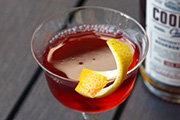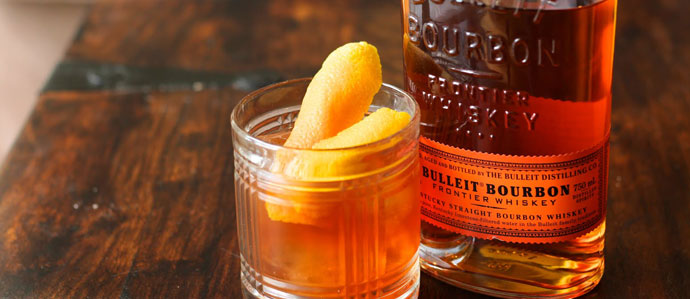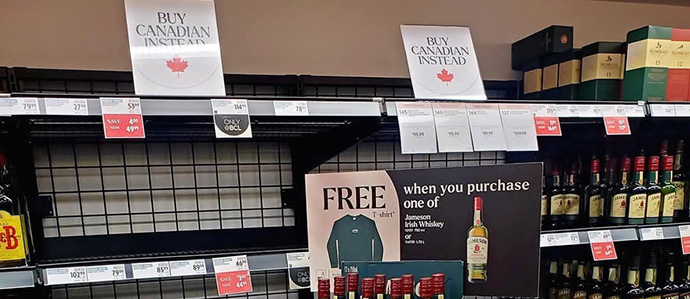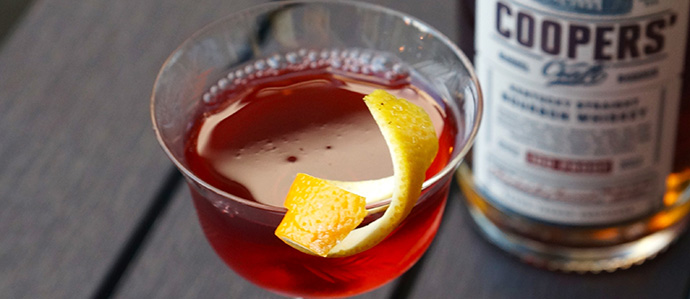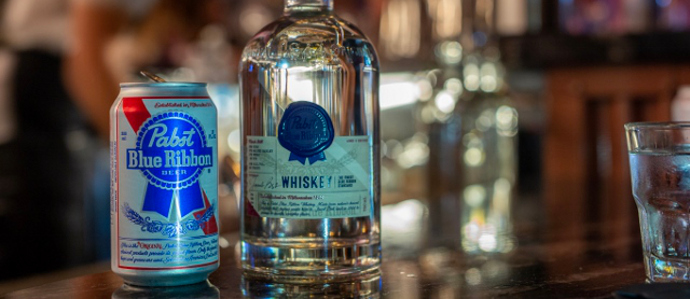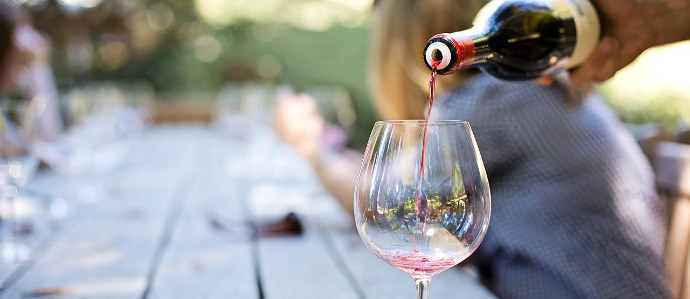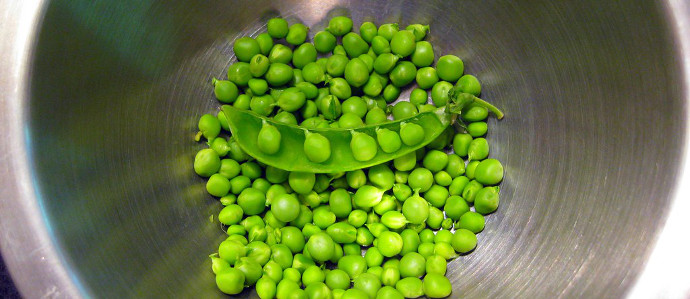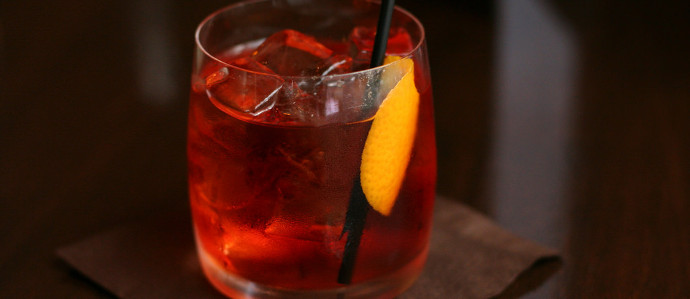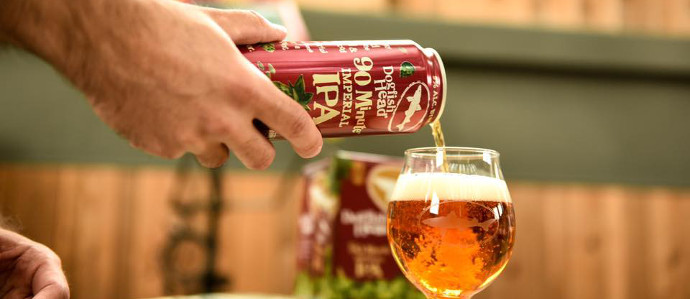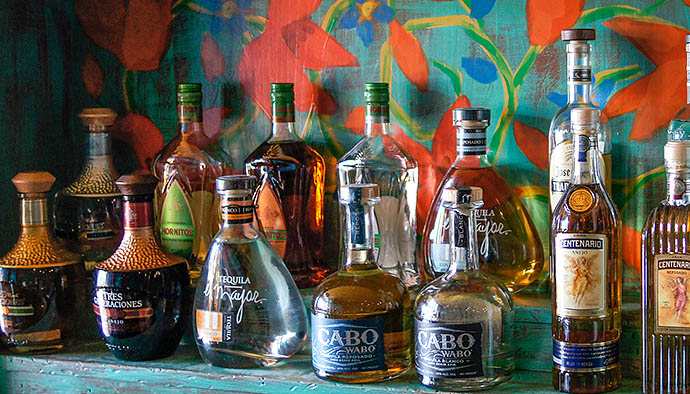
Most alcoholic beverages are distilled from yearly-renewable fruits or grains, but tequila is different. Each drop of (good) tequila comes from a whole agave plant, which must be carefully tended for 8–10 years before it is ready to be harvested, by hand. This is not the case for barley used to make beer or the corn used to make bourbon, for example, and even grapes for wine and apples for brandy will appear in new crops each season, if well cared for.
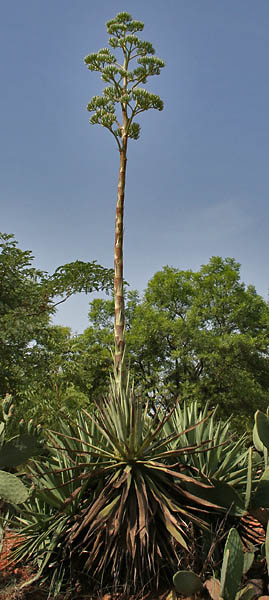 When the agave plant is ready, trained farmers called jimadores harvest the succulent and chop off the leaves, living the “jima.” This central portion of the plant — similar to the heart of an artichoke, only much larger — is what is used to make the booze.
When the agave plant is ready, trained farmers called jimadores harvest the succulent and chop off the leaves, living the “jima.” This central portion of the plant — similar to the heart of an artichoke, only much larger — is what is used to make the booze.
Mezcal & History
Tequila was the first-ever commercially produced liquor, and has a long history. The Aztecs created pulque from the agave plant many centuries ago, and Spanish Conquistadores observed these practices and began distilling mezcal in the 1400s. In 1758, thanks to a grant from the King of Spain, José Antonio Cuervo became the first officially licensed manufacturer of the spirit.
By 1873, when Don Cenobio Sauza founded his now-famous distillery, the agave spirit being sold and shipped around the world was still actual mezcal wine — defined by the use of below-ground pits filled with wood that were used to roast the jimas before extracting sugars, leading to mezcal’s defining smoky flavor.
To keep up with increased demand, Sauza switched to above-ground ovens powered by steam, and not wood directly, which led to an easier product, albeit with a slightly different taste. This is the tequila we know today.
Mixto vs. 100% Agave
Today, because of protective regulations, all tequila must originate in Mexico, but not all tequila is the same. In recent decades, international macro-brands bought into Mexican distilleries and have flooded the U.S. market with a product that is not made entirely from the special agave plant — this is the stuff that is notorious for causing hangovers, and gave tequila a bad rap.
If you’re buying a bottle tequila, look for “100% agave” on the label. If that designation is missing, there’s a good chance the agave spirit was first shipped out of Mexico and cut with other alcohol — distilled from cane sugar or other grains, for example — and then packaged and sold as tequila. While this “mixto tequila” is legal and makes for a cheap bottle, it does not make for a good morning after.
Blanco, Reposado, Añejo
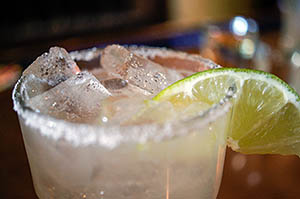 Tequila comes in three main types, defined by how long the spirit has been aged with wood. Blanco (sometimes also called “silver”) is simply the raw product of the fermented, distilled agave. Along with a strong punch of alcohol, the agave flavor comes through (if it’s not mixto), and this is often the type used in margaritas or other mixed drinks.
Tequila comes in three main types, defined by how long the spirit has been aged with wood. Blanco (sometimes also called “silver”) is simply the raw product of the fermented, distilled agave. Along with a strong punch of alcohol, the agave flavor comes through (if it’s not mixto), and this is often the type used in margaritas or other mixed drinks.
Reposado has been aged between two months to a year, and has a more pronounced flavor and a light gold tint. Añejo tequila is aged 1–3 years, and provides a smoother sip, appropriate for drinking neat, with a strong woody character. Recently, a new designation of “extra añejo” has come into use for tequilas aged longer than three years.
Armed with this primer, it’s time for a drink! What’s your favorite way to sip tequila?
Feedback
The Drink Nation Presents: The Home Bar Project
Have you ever dreamed of having an amazing home bar, filled with bottles you actually use and the tools you need to execute a fine crafted cocktail? E...read more ›
Canada's Next Level Response to Tariffs Removes All U.S. Wine & Spirits From the Shelves
Part of Canada's response, their retaliation, to the tariffs imposed o...read more ›
The History of The Boulevardier Cocktail - and How You Can Make it at Home
In this history segment, we take a closer look at a classic cocktail: The Boulevardier....read more ›
Behind the Bar: Liana Oster of Dante
For this exciting installment of Behind the Bar, we had the incredible opportunity to sit down with Liana Oster, the head bartender at Dante in New Yo...read more ›
Pabst Blue Ribbon Launches Blue Ribbon Whiskey in Select US Markets
PBR has launched their own whiskey. Let's keep an open mind and see what is inside this bottle....read more ›
The Master Sommelier Scandal is Now the Subject of a New Investigative Series
There's a new investigative series about one of the biggest scandals to ever hit the wine world....read more ›
Using Peas to Make Gin Might Lead to More Environmentally Friendly Spirits, Studies Show
Scientists may have discovered a more environmentally friendly way to make one of the world's most popular spi...read more ›
Drink a Classic Cocktail for a Good Cause During Negroni Week, June 24-30
Negroni Week 2019 is June 24-30, so drink this classic cocktail for a good cause....read more ›
What to Do if Your Uber, Lyft, or Cab Driver Ever Strays From Your Destination or Makes You Feel in Danger
If you're taking an Uber, Lyft, or cab and feel unsafe, there are steps you can take to protect yourself....read more ›
Behind the Bar: Kat Corbo of The Study & Winner of Speed Rack 2019
This time on Behind the Bar, we spoke to Kat Corbo of The Study, who recently won Speed Rack 2019....read more ›
Boston Beer & Dogfish Head Have Merged in a $300 Million Deal
In a huge move for the American craft beer community, Boston Beer and Dogfish Head have agreed to a merger valued at $300 million dollars. ...read more ›





